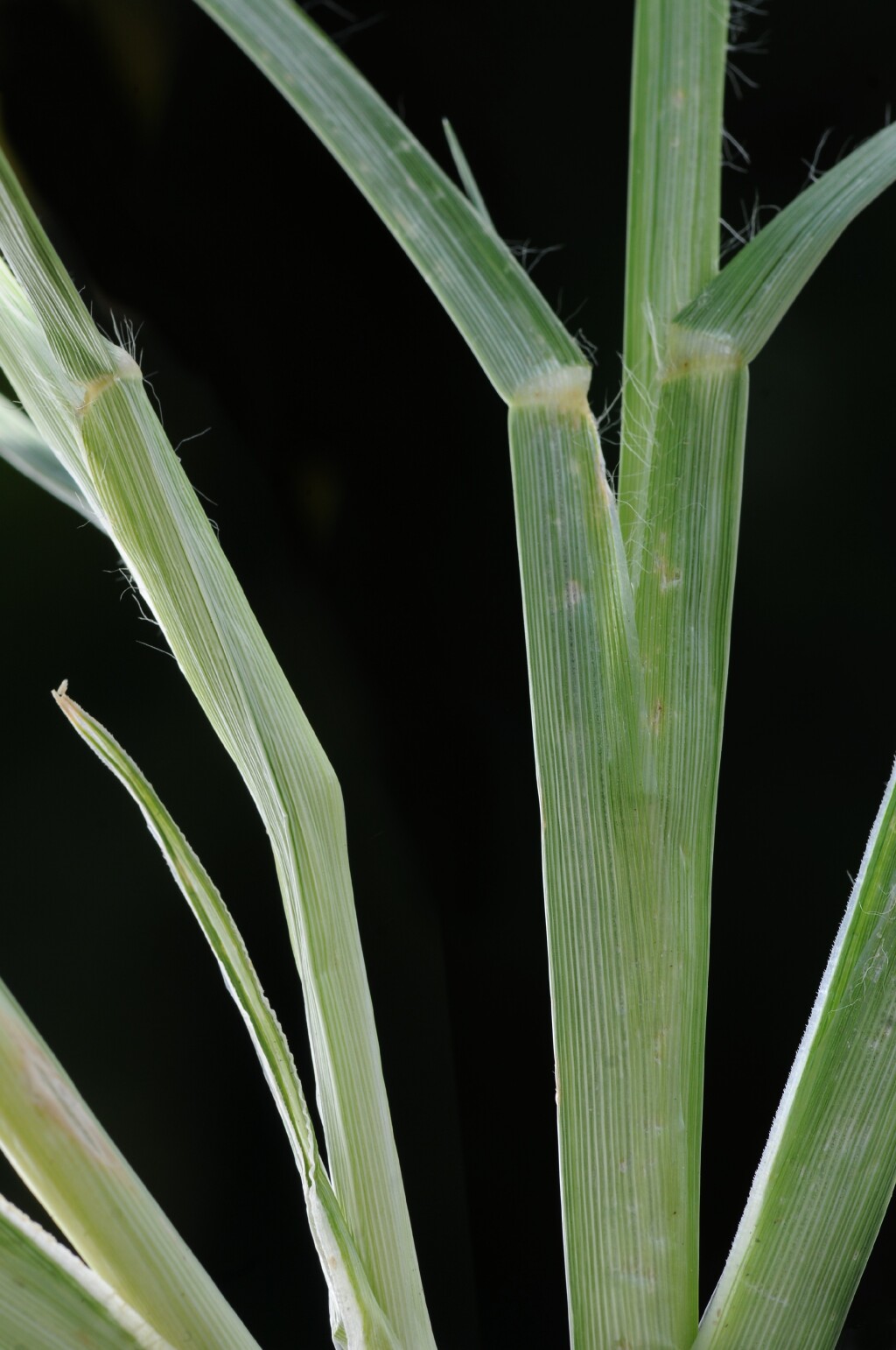Eleusine indica
(L.) Gaertn. Goose-grassTufted or stoloniferous annual or rarely perennial, culms ascending to erect, to 70 cm high. Leaves glabrous or sprinkled with fine, tubercle-based hairs along the margins near the sheath/blade junction; blade channelled or closely folded, to 25 cm long and 6 mm wide; ligule 0.5–1 mm long. Inflorescence commonly with 1–several spikes below the terminal umbel. Spikelets 3–9-flowered, 4–7 mm long; glumes acute, narrowly winged along the keel, the lower 1-nerved, 2–3 mm long, the upper 3–7-nerved, 3.5–5 mm long; lemma similar to but slightly longer than upper glume and 1–3-nerved; seed papillose, c. 1.5 mm long. Flowers Jan.–Mar.
MuM, VVP, RobP, MuF, GipP, OtP, WaP, NIS, EGL, HSF, Strz. Naturalised in all mainland States, also many tropical and warmer temperate countries. Possibly indigenous to India but precise country of origin unclear. An occasional weed of well-watered areas (e.g. roadside drains, sports-fields), and cattleyards, the seed probably spread by stock, often prevalent during wet, humid summmers.
Walsh, N.G. (1994). Poaceae. In: Walsh, N.G.; Entwisle, T.J., Flora of Victoria Vol. 2, Ferns and Allied Plants, Conifers and Monocotyledons, pp. 356–627. Inkata Press, Melbourne.
 Spinning
Spinning




